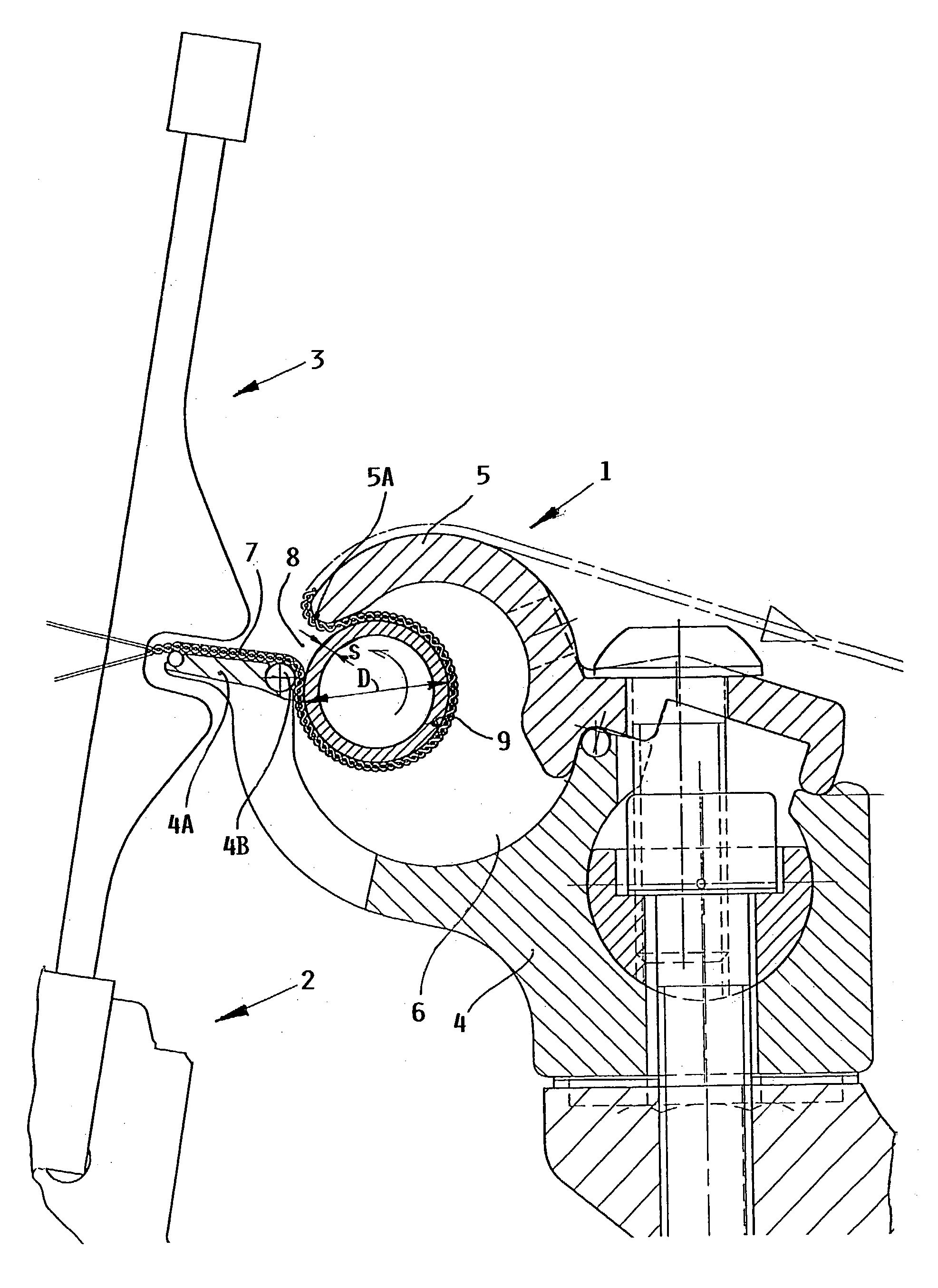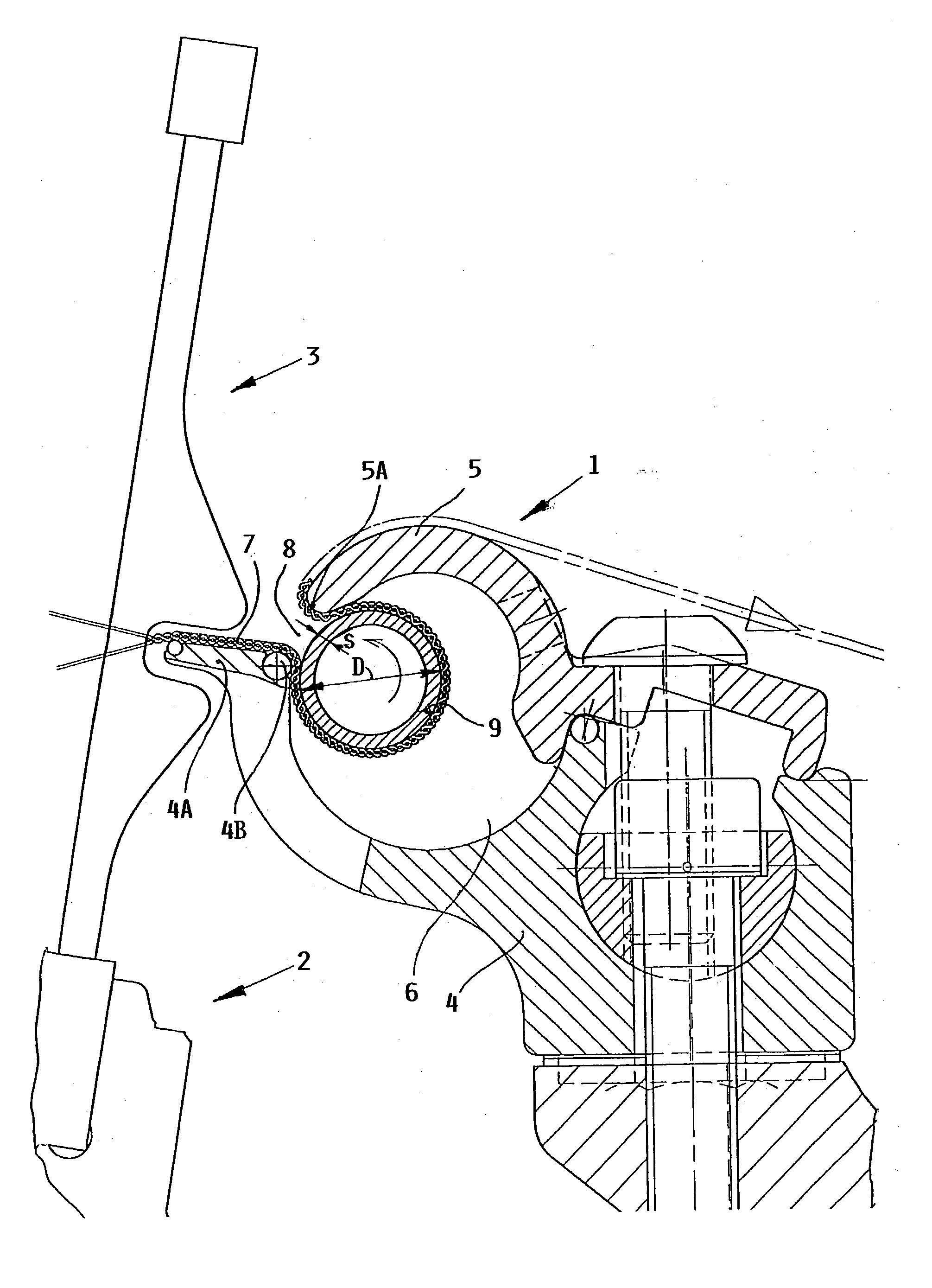Fabric spreader with a lightweight hollow metal spreader rod for a loom
a technology of hollow metal and fabric spreader rod, which is applied in the field of fabric spreader with a lightweight hollow metal spreader rod for a loom, can solve the problems of high degree and rate of wear, relatively heavy weight of coated solid metal spreader rod, and unsatisfactory operation and handling
- Summary
- Abstract
- Description
- Claims
- Application Information
AI Technical Summary
Benefits of technology
Problems solved by technology
Method used
Image
Examples
Embodiment Construction
[0011] The present example embodiment of a fabric spreader arrangement 1 or spreader table 1 according to the invention is to be arranged in a generally conventional manner in a loom, such as an air jet loom. The single drawing FIGURE schematically shows a partially sectioned side view of the inventive fabric spreader arrangement 1 arranged in connection with the weaving reed 3 carried by a reed support 2, e.g. reed batten or sley 2 in an air jet loom.
[0012] The fabric spreader arrangement 1 comprises a fabric spreader body structure that includes a fabric spreader body 4 and a cover 5, as well as a spreader rod 9. The spreader body 4 is releasably or removably connected to the machine frame of the loom, for example by bolts as schematically shown. The spreader body 4 has a length that extends along the maximum weaving width of the loom. The removable cover 5 is removably secured relative to the spreader body 4, for example also by bolts or the like. The removable cover 5 and the sp...
PUM
| Property | Measurement | Unit |
|---|---|---|
| surface roughness | aaaaa | aaaaa |
| thickness | aaaaa | aaaaa |
| outer diameter | aaaaa | aaaaa |
Abstract
Description
Claims
Application Information
 Login to View More
Login to View More - R&D
- Intellectual Property
- Life Sciences
- Materials
- Tech Scout
- Unparalleled Data Quality
- Higher Quality Content
- 60% Fewer Hallucinations
Browse by: Latest US Patents, China's latest patents, Technical Efficacy Thesaurus, Application Domain, Technology Topic, Popular Technical Reports.
© 2025 PatSnap. All rights reserved.Legal|Privacy policy|Modern Slavery Act Transparency Statement|Sitemap|About US| Contact US: help@patsnap.com


